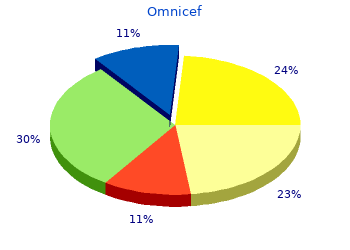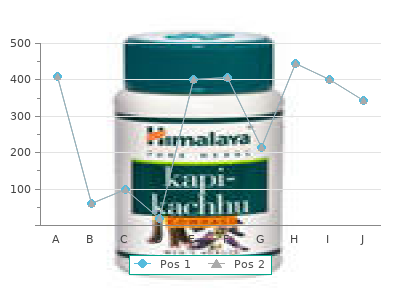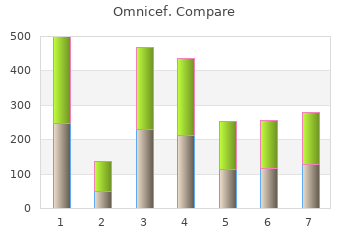2018, Culver-Stockton College, Kapotth's review: "Omnicef 300 mg. Order Omnicef online in USA.".
The central axis that is concealed at the bottom of the pseudostem is called shaft omnicef 300mg free shipping antimicrobial x ray jackets. At the time of flowering omnicef 300 mg line formula 429 antimicrobial, the shaft elongates discount 300 mg omnicef broad spectrum antibiotics for sinus infection, pierces through the pseudostem and produces an inflorescence terminally. Musa is a monocorpic perennial, because it produces flowers and fruits once during its life time. The flowers are protected by large, brightly coloured, spirally arranged, boat shaped bracts called spathes. The male flowers lie within the upper bracts, the female flowers within the lower bracts and the bisexual flowers within the middle bracts. In Musa, the three tepals of the outer whorl and the two lateral tepals of the inner whorl are fused by valvate aestivation to form 5 toothed tube like structure. Androecium Basically stamens 6, in two whorls of 3 each, arranged opposite to the tepals. In Musa only 5 stamens are fertile and the inner posterior stamen is either absent or represented by a staminode. The filament is filiform and rudimentary ovary or pistillode is often present in the male flower. Seed: Non - endospermous 56 Botanical description of Musa paradisiaca Habit Gignatic monocorpic perennial herb. The three tepals of the outer whorl and the two lateral tepals of the inner whorl are fused by valvate aestivation to form 5 toothed tube like structure. Musa paradisiaca Floral diagram 58 Androecium Stamens 6, in two whorls of 3 each, arranged opposite to the tepals. Only 5 stamens are fertile and the inner posterior stamen is either absent or represented by a staminode. Fruit An elongated fleshy berry and the seeds are not produced in cultivated varities. The tender green bananas, the shaft and the flowers are cooked and eaten as vegetable. The sap obtained from the sheathy leaf bases is considered to be an antidote for cobra bite. The small fruits obtained from Musa chinensis (Dwarf banana) are sweet and edible. Fibre plant The fibres obtained from sheathy leaf bases of Musa textilis (Manila hemp) are woven into Abaca cloth and used for cordage. Ornamental plants Ravenala madagascariensis (Travellers palm), Strelitzia reginae (the bird of paradise flower) and Heliconia sp. Draw the floral diagram of bisexual flower of Musa paradisiaca and write floral formula. The members of this family are distributed throughout the tropical regions of the world. Habit Mostly unbranched trees with arborescent stem having prominent scars of leaf bases and a crown of large leaves (eg. Nipa fruticans has no aerial stem and leaves arise directly from the underground rhizome. Stem Mostly aerial, erect, unbranched and columnar having prominent scars of leaf bases. Leaf Exstipulate, petiolate, petiole long and very strong with sheathing leaf base, palmately compound (eg. Inflorescence Large, usually lateral arising from the axils of leaves, spadix (eg. In Corypha umbraculifera (Kudai panai), the spadix is terminal and it measures about 10 metres. In Cocos nucifera male flowers are densely arranged at the upper portions of the spike and female flowers are at the base of the spike. Perianth Tepals 6 arranged in two whorls of three each, persistent, polyphyllous or gamophyllous showing valvate or twisted or imbricate aestivation. In Phoenix acaulis, the tepals of outer whorl are united and valvate while that of inner whorl are free and twisted. Anthers are dithecous, basifixed or dorsifixed, introrse and dehiscing longitudinally. As the stem increases in diameter, new roots are added at higher levels from the massive basal cushion and the youngest roots are visible above the soil surface. Stem Aerial, erect, unbranched and columnar, having prominent scars of leaf bases. Leaf Exstipulate, petiolate, petiole long and very strong with sheathing leaf base, spiral and pinnately compound showing parallel venation. Inflorescence Large, lateral arising from the axils of leaves, compound spadix, enclosed by large woody bract called spathe. Each spike in the spadix bears 2 to 3 female flowers at the base and 200 to 300 male flowers at the top. Flowers are protandrous, the female flowers open, after the male flowers have withered. Perianth Tepals 6 arranged in two whorls of three each, persistent and polyphyllous showing valvate aestivation in both the whorls. Perianth Tepals 6 arranged in two whorls of three each, persistent, and polyphyllous showing imbricate aestivation in both the whorls.


There will be increased vomiting which leads to depletion of extra cellular fluid which eventually leads to hypovolemia and dehydration buy 300mg omnicef overnight delivery antibiotic resistance vets. A strangulated loop dies and perforates to produce severe bacterial peritonitis which is often fatal order 300mg omnicef with mastercard antibiotic bactrim. Grossly distended abdomen restricts diaphragmatic movement and interferes with respiration omnicef 300 mg overnight delivery antibiotic ointment for pink eye. A multiple organ failure will subsequently result if the strangulated loop is not removed. The mesocolic veins then become occluded and the arterial inflow into the twisted loop perpetuates the volvulus until it becomes irreversible. Unless the situation is relieved, perforation may occur due to either pressure necrosis at the base of the twist or to avascular necrosis at the apex. If the deflation fails, laparotomy and derotation of the loop has to be done followed by elective resection to prevent recurrent attacks. Intravenous fluid should be given to rehydrate the patient if there is a sign of dehydration. Emergency Surgery: In case of complicated volvulus with signs of peritonitis, the patient has to be prepared following resuscitative measures and giving antibiotics. Resection of the gangrenous segment with Hartmans colostomy is done which has to be closed at a later stage. Following obstruction of the lumen, a continued secretion of mucus produces distension of the distal end. Subsequently, a patchy necrosis, gangrene and perforation develop resulting in peritonitis and sepsis and finally death. B: Close follow up of surgical patient is very important post operatively to identify complications as early as possible and correct in time. Organized appendiceal mass or progress to appendiceal abscess The inflammatory process may become walled off in the right iliac fossa by omentum and loops of bowel to form a mass. The management of appendix mass is conservatively with combined antibiotics for anaerobes, aerobes and gram negative bacterial and fluids. The drug of choice is a combination of metronidazole and ceftriaxone if available. If this combination is not available, use ampicilline, chloramphenicol and gentamycin instead. Patient should be followed up, strictly monitoring The vital signs every 4 hours The mass size and consistency 12 hourly Patients condition and laboratory every other day If the mass settles on conservative management, the patient can be discharged and readmitted for interval appendectomy 6 weeks later. If the appendix is imbedded in the conglomerated mass, one should not struggle to deliver it for fear of damage to surrounding structures. It is an acute life threatening condition caused by bacterial or chemical contamination of the peritoneal cavity. The major causes of peritonitis include: Perforated appendix Perforated peptic ulcer disease Anastomotic leak following surgery Strangulated bowel Pancreatitis Cholecystitis Intra abdominal abscess Haematogenous spread of infective agent such as typhoid or tuberculosis Typhoid perforation Ascending infection (e. Secondary peritonitis: caused during perforation or rupture of abdominal organ allowing access of bacteria and irritant digestive Juices to the peritoneum. Acute peritonitis: rapid onset or brief duration with several symptoms Chronic peritonitis: long duration since the onset involving very slow changes. Bacteria or other pathogenic agents can gain access to the peritoneum by the above mentioned routes. The infection can remain limited to a local area of the peritoneum or become generalized. Factors which favor localization of the infection include: Anatomical factors (e. Plain film of the abdomen can also be diagnostic with findings related to underlying pathology e. Early diagnosis &referral when indicated Introduction Hepatobiliary structures have significant surgical importance not only in abdominal surgery but also in general outcome of surgical management on any other sites of human body. They are common sites of different surgical diseases due to their big size and very large and double blood supply. The right lobe is the larger, and gall bladder is attached to its inferior surface. Hepatic artery, portal vein, and the hepatic duct together with lymphatic vessels and nerves enters and leave the liver at the area called porta hepatis,which is found at the interior and posterior aspect of right lobe. Incidence The disease occurs approximately in 3% of patients with intestinal amoebiasis. Hepatic lesion usually occurs in the right lobe and has the following characters: - Is large, single abscess - Contains characteristic liquid material which is reddish brown anchovy paste fluid - Has thin wall with little or no fibrosis Clinical manifestation History: Chief complaints are fever, chills, right upper quadrant pain which may radiate to right shoulder area. There could also be a history of: - Cough, pleuritic chest pain or dyspnea - Painful epigastric swelling if left lobe is involved - History of antecedent diarrhea - Weight loss Physical examination: Physical examination can reveal the following findings: - Tender hepatomegaly : almost constant feature - Tenderness over lower intercostal spaces with /without swelling and skin edema. Rupture: direction of rupture can be into plural cavity, lung, pericardium or peritoneum. The hepatic hydatid cyst is usually superficial and composed of two layers laminated wall. Clinical manifestation - Usually asymptomatic - Symptom of pressure on adjacent organs - Upper abdominal pain and tenderness - Palpable mass or diffuse liver enlargement - weight loss - Jaundice and ascites: uncommon - With secondary infection: fever, chills and tender hepatomegaly - Urticaria and erythema Complications 1. Broncho-pleural and hepato-bronchial fistulas Investigations - U/S of the abdomen :- cyst and daughter cysts - Casoni skin test: if reagents are available.

Due to the ageing of the population in Europe buy omnicef 300mg on line antibiotic quality control, cancer incidence cases are expected to increase [1] thus constituting a major public health issue for Europe to tackle cheap omnicef 300mg otc antimicrobial treatment. Amongst many important efforts in the public health fields are the European Cancer Programme and the European Code Against Cancer [2 cheap 300mg omnicef antibiotic resistance frontline, 3], carriers of developments in the reduction of cancer risk and recommendations on cancer screening [4]. Cancer indicators were selected by criteria of reliability, comparability, easy collection, and faculty of country representation. This chapter presents the situation of cancer in Europe using most recent available data published by European projects and international agencies. Such information system must include: the availability of population-based data; the completeness of data collection in all European countries; the standardisation of data collection methods, as to allow comparison across Europe. No cancer control plans can be implemented without a complete information system and it is therefore vital that the work of population-based cancer registries is better encouraged both for what concerns the allocation of governmental funds and via the modifications of data protection laws now in place and constituting an impediment to the adequate functioning of cancer registration (i. Cancer incidence is the main indicator able to define which are the priorities of cancer control in primary prevention and early diagnosis. In men, Southern Europe reached in 2006 the incidence levels of Western Europe while in women differences among the macro-areas reduced between 1998 and 2006. Incidence rates for all cancers were highest in Western Europe for men (482 new cases per 100,000) and in Northern Europe for women (351 per 100,000) in 2006. In Europe, the most common form of cancer in men and women was female breast cancer (16% of all cancer incidence) followed by colorectal and lung cancers (12% of all cancer incidence each). In Europe more than 50% of cancer cases are due to colorectal, lung, female breast, uterus and prostate cancers. In men, prostate cancer was the principal cancer site in all macro-areas except for Eastern Europe where lung cancer was yet the most frequent cancer. In women, breast cancer was the most frequent site followed by colorectal cancer in all macro-areas except for Eastern Europe where breast cancer was followed by uterus cancer. Colorectal cancer constitutes an important burden in all macro-areas both in men and in women. The following points emerge from these data: 1 increasing cancer incidence rates make primary prevention a cancer control priority 2 primary prevention priorities should focus on known tobacco, diet, alcohol and physical activity health determinants as indicated by available scientific evidence as relevant for cancer increasing risks 3 about uterus cancer, secondary prevention (screening) actions are to be implemented in Eastern Europe (see paragraph 5. In the last 40 years important evidences have arisen suggesting that diet significantly affects the onset of chronic-degenerative pathologies, pain of the economically-developed world. Association between diet and cancer was studied over a long period and research has now reached a critical turning point. Other important evidences in the fields of cardiovascular and degenerative diseases led to the implementation of public health plans on dietary prevention and promotion of physical activity. Also stressed by the Green Paper is the importance of internationally recognised key messages on healthy diet: i. The programme conveys six key messages: Prevention throughout life is effective and must be regarded as an investment in health and development Society should create health-supporting environments, also making healthy choices easier choices Health and medical services should respond to the actual disease burden and increase health promotion People should be empowered to promote their own health and be active partners in managing diseases Universal access to health services and promotion: disease prevention is central to achieve health equity Governments at all levels should build healthy policies and ensure action across all concerned sectors. For some cancers specific diagnostic procedures were considered cost-effectiveness to be offered in organised programmes to the entire asymptomatic population in order to prevent mortality from the diseases by means of detecting cancer at early stage or a disease before it has become cancer. By detecting and treating pre-cancers organised screening programmes can also prevent incidence of the invasive disease. The international scientific community suggests to promote organised population-based screening methods for the following malignancies: mammography for female breast cancer, pap smear for cervical cancer and faecal occult blood for colorectal cancer. In Italy and Finland as in the majority of western European countries a substantial decrease in cervical cancer mortality rates was observed, while in some Eastern European and Baltic countries trends were inversed. This cost has to be compared with the 16 million Euros employed for treatment costs of cervical cancers in Bulgaria (year 2001). However in 2007, legislative changes occurred in Romania in the field of health, including cancer registration and cervical cancer screening. Two informative documents were submitted to the Latvian Health prompting the reorganization of existing opportunistic screening, and the institution of a central mass-screening registry. Comparison with other countries suggests the possibility that 30 deaths and 100 incident cases of cervical cancer per year can be avoided. More than 800 of invitation were distributed via mail and by nurses in February in March 2007. Matched to the results of the year 2006, the number of women attending the programme increased almost twice (614 compared to 362). Consequently, in these ages overall uterus cancer mortality is a proxy for cervical cancer mortality. Finland and Spain had better survival than expected from its moderate health expenditure. Patients in Eastern Europe had the highest improvement in survival for colorectal cancer from 30,3% to 44,7% and female breast cancer from 60% to 72,4% although survival in Eastern Europe remained lower than in the other European areas. Survival are age-adjusted Colorectal (M+F) 1991-93 1994-96 1997-99 Lung (M+F) 1991-93 1994-96 1997-99 Northern Europe 53. It is also important to stress that European survival differences depending on the health investments are actually difficult to reduce. The main obtainable result is that each country reaches that level of survival permitted to own available resources. Data collection will indicate availability of the three indicators and ways to improve methodology for the treatment delay indicator. Cancer mortality gives information on social burden of the disease and it is useful to define surveillance policies.

